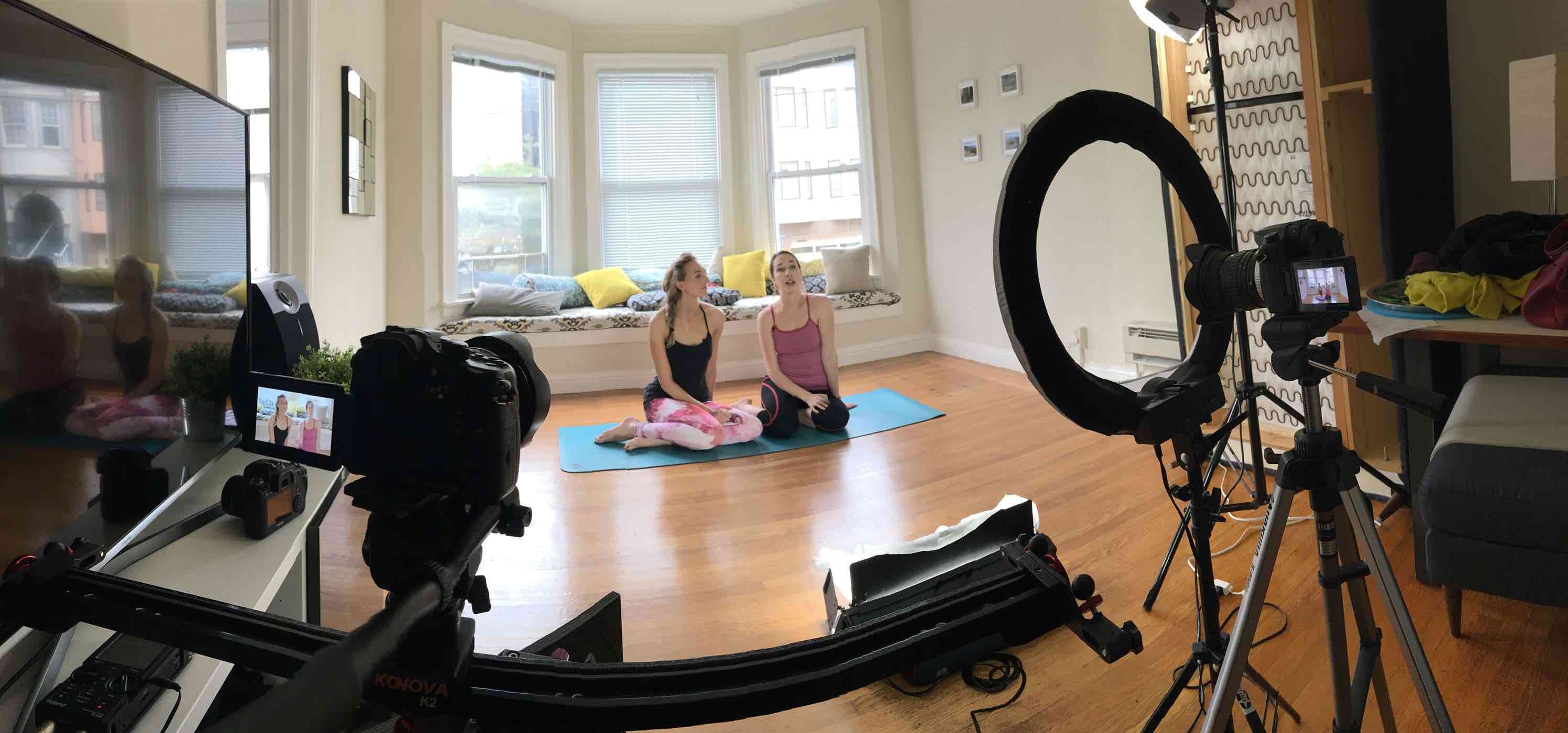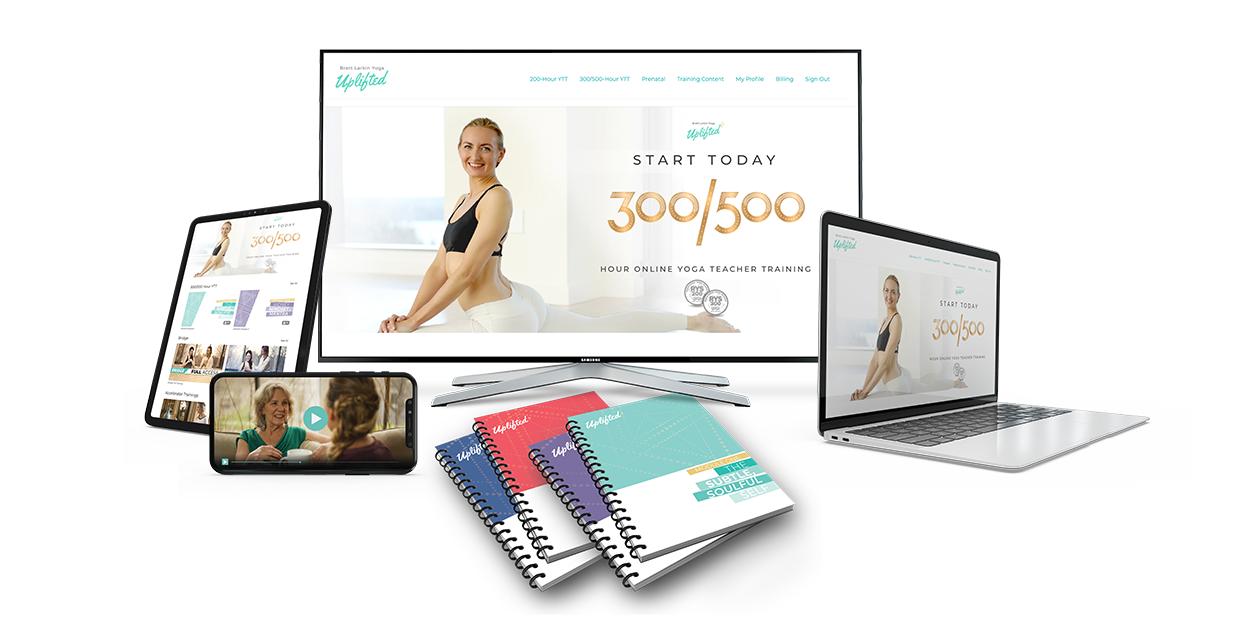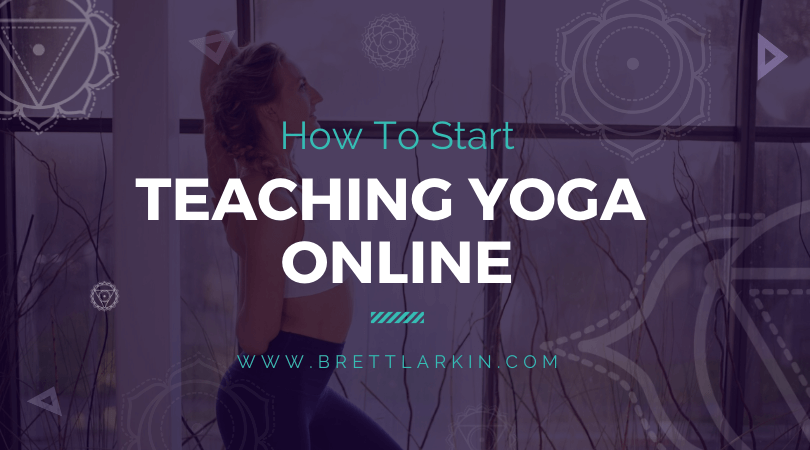With the way that things are going in the world, what with social distancing and self-quarantines in place, it makes sense that practitioners and yoga instructors are moving online.
And since I’ve been doing that since the beginning, I have plenty of insight to share with you 🙂
Every yoga studio, yoga instructor, and even yoga teacher training courses are shifting to online training and learning. So it makes sense that you do too.
But where to begin?
Teaching yoga and meditation online can seem counterintuitive and perhaps even daunting, but I promise it’s not. You just need time, patience, and a few key tools.
In this post, I will share with you exactly what I’ve done to build my entire yoga business online, from offering an online training a couple of times a year to publishing online yoga classes every week. I even have a membership program that includes workshops and courses on different types of yoga, pranayama, meditation, and even yoga history that boosts my income made from teaching online.
So trust me. It’s possible. And I know how to do it.
Here are my tips for taking your yoga teaching online.
1. Create a Plan
As exciting as it may be to officially decide to teach online yoga classes, I recommend first slowing down, taking a deep breath, and creating a business plan for your yoga career.
What are the types of yoga that you want to teach? Will you offer training courses, be a private yoga instructor that teaches via video call, or upload your classes to an online yoga studio? Or do you want to create a yoga app? Or maybe all of the above! It’s a great idea to diversify your income streams early on to ensure stable cash flow.
Will you connect with your students through social media or will you let aggregate sites find an audience for you? Do you want to create a monthly membership program or lead yoga teacher training courses or simply upload weekly yoga classes?
Figure out what kinda yoga instructor you want to be online, where you want your audience to find you, and how you intend to make money. Then do it and do it well.
Read Next: 13 Types of Yoga Teacher Tax Deductions (And Other Tax Tips)
2. Figure Out Your Digital Tools

While I definitely love having a professional camera and editing software, that’s not at all necessary to make quality yoga videos. In fact, many YouTube channels are made entirely with an iPhone and the iMovie app right on their computers!
What I do recommend, however, is that you find an editing software that is good enough to create something that looks professional and add text when needed. I recommend Filmora for PC users and iMovie for Mac users. I also recommend getting a tripod for whatever camera you decide to use, a studio light, and a microphone. I’ve already written about how to create an inviting home studio setup for free, so I definitely encourage you to look into that for more ideas.
If you want to live stream your classes, then I suggest using Zoom to teach online yoga.
Another thing to consider is where you will get your royalty-free yoga music from and how you will use it in your videos or streaming.
While these will certainly have some start-up costs, they will increase the quality of your videos significantly so that your students don’t exit your classes out of annoyance because of poor quality.
Read Next: My Exact Tech Tools For My Million Dollar Online Yoga Platform

3. Create A Solid Website
Just like the quality of your yoga videos will really help determine the success of your online business, the quality of your website will help build trust with your students. Creating a Wordpress site is best as it allows you to completely customize it as needed. Do a little bit of research on how to do search engine optimization to make yourself discoverable (for free!) and then create something beautiful.
You can easily purchase some Wordpress templates that are easy to install, or even use something like Divi builder to customize the site yourself.
Take a look at other yoga teacher homepages to get an idea of what works and how to position your offerings.
If you want to host the yoga videos on your own website behind a paywall, then I suggest looking into something like Uscreen.
One thing that I super recommend that will take some extra effort on your part is to make your website impossibly helpful to your students. Provide blog posts that support their yoga practice, offer free downloads on topics like yoga postures, mindfulness, or whatever else you feel you can offer expertise on. Sharing your knowledge and understanding in the field not only improves the experience of your students but also makes them trust you enough to sign up for your courses.
The best part?
It does the work for you even when you’re not online as it will continue to attract new potential customers for months to come.
4. Grow Your Social Media Audience

I know, social media is an absolute frenzy for attention at the moment but there’s a reason for that: it works. As much as students love improving their yoga practice, they love feeling connected to a community even more.
While there are so many opportunities to sell your online yoga classes or promote your online yoga studio through your social media accounts, I really recommend sticking to the community aspect. If you can build a relationship with your audience naturally, then selling your products will also come naturally.
Tools like Later can help you find the most effective hashtags, schedule your posts for the most optimal times, and evaluate your posting efforts. You can also easily use quality filters by download LightRoom presets from an influencer you love to help establish your brand online.
I recommend posting every single day and sharing stories throughout the day. You can just talk into the camera about something that happened to you that day or share what your current practice looks like. The idea is to build a personal connection with your audience rather than sell them your teacher training program. My Instagram account, for example, gets way more engagement when I post pictures and videos of my son.
So how is it helpful for your online yoga business?
Because if you want to place ads on social media for your online training or at-home yoga courses, you’ll want to know which audiences to pitch them to. And if you already have a loyal audience ready to go, then you can use the data about your audience to scale up your ads and show them to even more people just like them.
5. Make Lasting Connections Through Your Newsletter
One of the most valuable things that you can have as an instructor (besides your instructor certification) is an email list. I recommend collecting emails whenever possible, like for downloadable workbooks or lessons, so that you can keep in touch with your audience and always be top of mind.
But just like with social media, don’t abuse the intimate connections that you’ve made. Instead, provide genuine knowledge and understanding that your audience can benefit from and let the relationship deepen. Then, when you’re ready to announce your teacher training program or newest lessons, they’ll be excited to sign up.
6. Get Your Classes Online

And, of course, start teaching online! My favorite platform is YouTube because it’s the world’s favorite platform, so it gives me the largest audience to work with. I also have my own membership where my training courses, yoga and meditation classes, and yoga challenges live.
But these work for me because I’ve been building my audience for a few years now (which I still recommend you do). To get started without an audience, though, then you might want to upload your classes to an online yoga studio that basically does all of the marketing for you.
Some of the most reputable online streaming platforms for yoga teachers are:
You can see successful yoga teachers already doing this. These are the best online yoga classes now, I recommend joining a couple for a month or two to see what the experience is like.
It’s important to note that yoga insurance does not always cover online classes unless they are taught live, so be sure to include a disclaimer in your videos. If you choose to strictly teach live-streaming yoga classes, then invest in yoga studio software to help you with scheduling, booking, and accepting payments.
Teaching online has been the best part of my entire career as a yoga instructor, so I’m excited to share it with you too. If you want to learn how to teach yoga online with more individual guidance from me, then I highly recommend my 300-hour online yoga business training. I created this program specifically with teaching online in mind. I walk you through every step of the process, from building your brand to finding your students to creating your classes.
And if not, then take a look through my blog, where I have more advice on how to take your teaching experience online. 🙂

Sneak Peak into My 300-Hour YTT - FREE Videos, Info Session, Bonuses!

YOU MIGHT ALSO LIKE
- What Is Mindset Coaching? A Complete Breakdown
- 5 Affordable Yoga Teacher Insurance Plans (Updated 2024)
- How To Make A Life Coaching Intake Form
- 7 Steps To Start A Life Coaching Business
- What Is A Self Love Coach? And How To Become One
- Self-Coaching: How To Become Your Own Life Coach
- Types Of Life Coaches: How To Choose Your Life Coaching Niche
- 20 Awesome Ways To Make Money As A Yoga Instructor
- Life Coach Marketing: A Comprehensive Guide For Long-Term Growth
- How To Get Clients For Life Coaching
- Are Life Coaches Worth It? Take This Self-Assessment To Find Out.
- How Much Does A Life Coach Make? Around $5k+ A Month
- Yoga Cues 101: Everything You Need To Teach Yoga
- How Much Do Yoga Teachers Make? (And How To Earn More)
- Life Coaching Skills: Are You Meant To Be A Life Coach?
- How To Incorporate Somatic Coaching Into Your Yoga Practice
- How to Easily Modify 6 Common Yoga Poses [+VIDEO]
- Try This 30-Minute Yoga Nidra Script for Deep Sleep and Relaxation [+ Video]
- 8 Best Yoga Podcasts For Yogic Business And Living
- How To Become A Life Coach (For Yoga Teachers)
- How To Use Social Media To Grow Your Yoga Business
- How To Find Your Yoga Niche (And Make $5K/mo)
- How To Make $5k Per Month As A Yoga Teacher
- How to Plan a Yoga Retreat That Earns 6 Figures
- Which Uplifted online yoga training is right for you?
- Creating Inclusive Yoga Spaces: Here’s What To Avoid Saying
- The Best Yoga Business Coaches to Skyrocket Your Income
- Traditional Yoga Class Plan Template (Tips for Yoga Sequencing)
- Best Blog Platform for Yoga Teachers
- Managing Cash Flow and Profit In Your Yoga Business
- The Top 5 Biggest Fears of New Yoga Teachers
- The Best Yoga Playlists For Yoga Teachers
- Why You Need A Yoga Intake Form (FREE download)
- How to Make a Logo for Your Yoga Business (No Design Skills Needed)
- This Cold Email Will Help You Land a Corporate Teaching Job
- This Cold Email Will Help You Land a Studio Teaching Job
- 9 Yoga Modifications for Pregnancy and How to Teach Them
- Our Expert Advice On How and Why To Teach Corporate Yoga
- How to Upgrade Your Yoga Alliance Certification Designation to 300 / 500 RYT
- How to Register Your YTT Certificate With Yoga Alliance (With Photos)
- How to Get Traffic to Your Yoga Website With SEO
- How to Update Your Yoga Alliance Teacher Profile Step-by-Step
- 6 Best Online Course Platforms For Yoga Teachers (Ranked)
- How To Make An Instagram Business Account As A Yoga Teacher
- 12 Actionable Tips For New Yoga Teachers Who Are Scared To Teach
- How To Prioritize Student Feedback On Zoom
- How To Teach Yoga On Zoom With Two Devices In 6 Easy Steps
- What Is Trauma Informed Yoga And Should I Get Certified?
- 10 Things You Must Do After Your Yoga Teacher Training
- 13 Types of Yoga Teacher Tax Deductions (And Other Tax Tips)
- My Exact Tech Tools For My Million Dollar Online Yoga Platform
- 10 Best FREE Facebook Groups For Yoga Teachers
- How To Log Yoga Alliance Continuing Education Hours
- The Only 7 Yoga Alliance Membership Benefits (Some Are Free)
- DSLR vs Smartphones: How To Choose The Right Microphone








